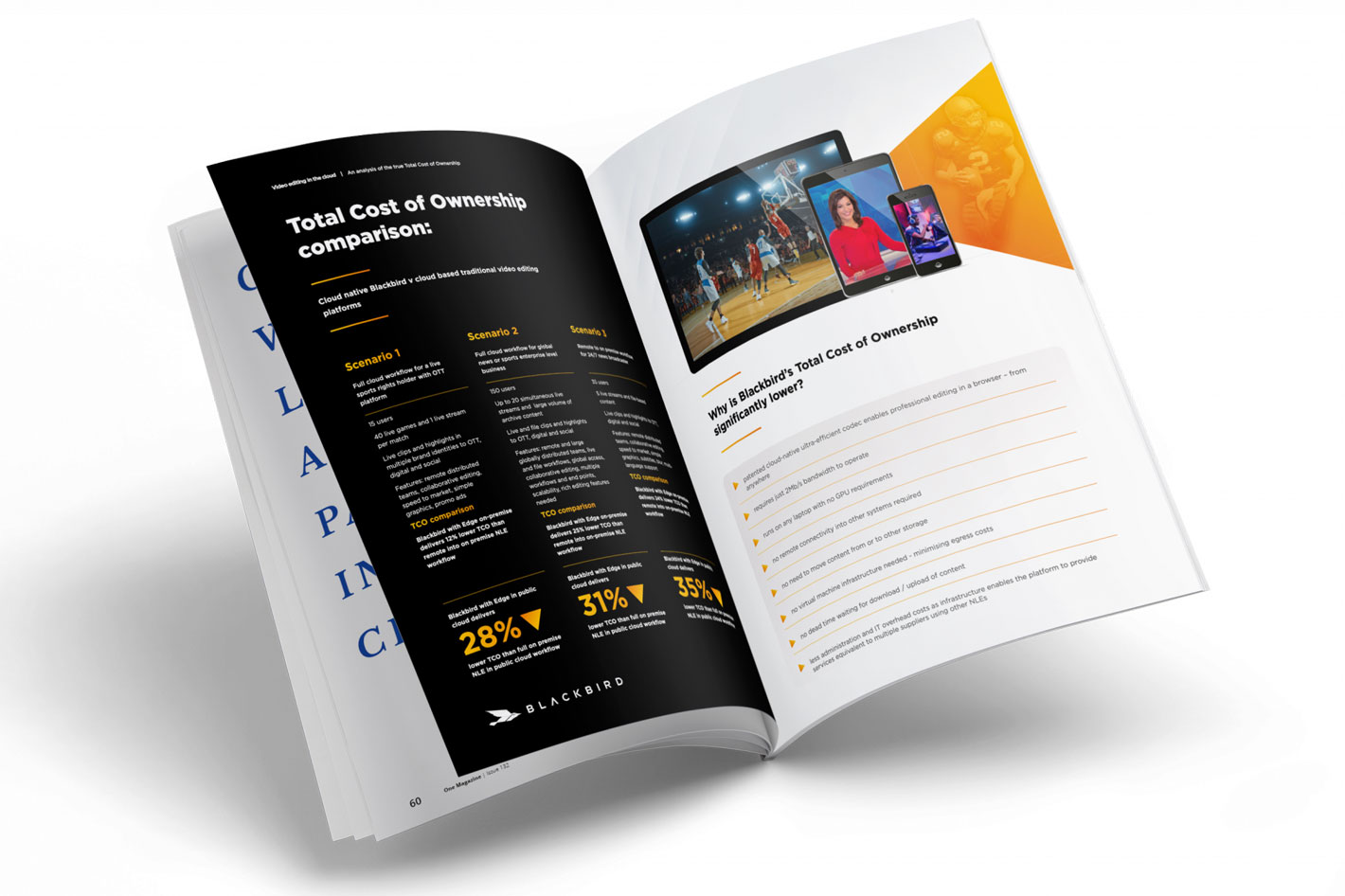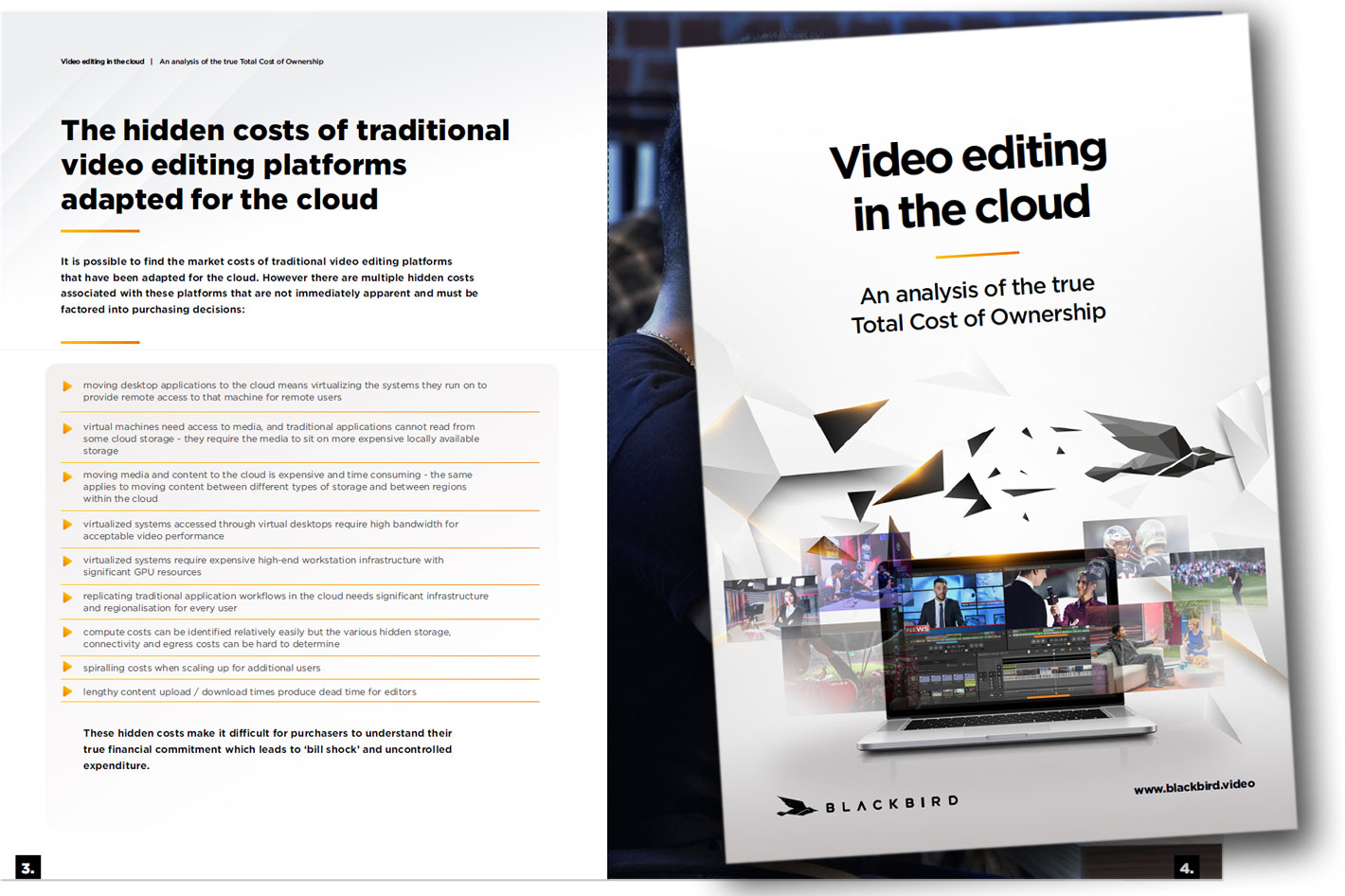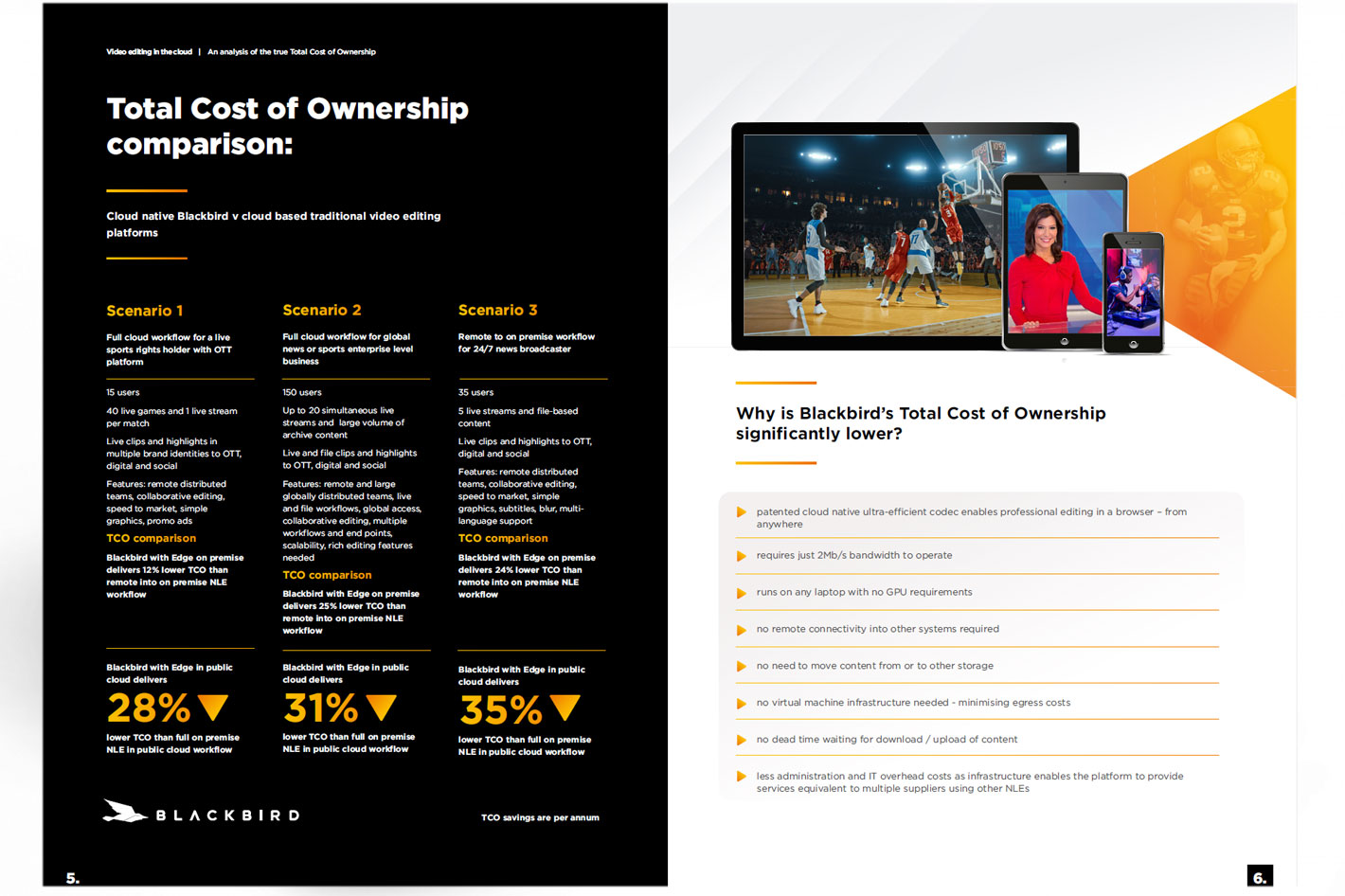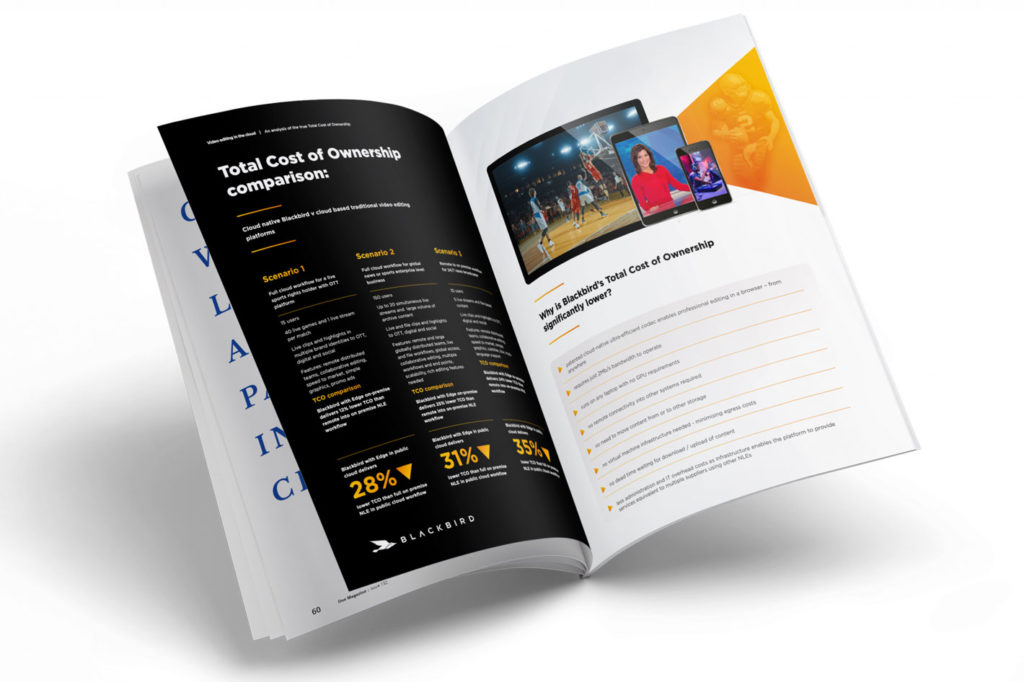 If you want to know more about how the cloud changed the cost of video editing, there is a new FREE report to read: Video editing in the cloud: An analysis of the true Total Cost of Ownership.
If you want to know more about how the cloud changed the cost of video editing, there is a new FREE report to read: Video editing in the cloud: An analysis of the true Total Cost of Ownership.
Blackbird is a company with a mission that is made clear in the “about” page on the company’s website: “We want to revolutionise the way video professionals and teams work with digital video, and maximise the value of video assets in an evolving broadcast and digital landscape.” As CEO Ian McDonough said when introducing the company, “Our key objective is simple: to increase the value of your video – whether this be monetary value or usability value. We do this by hyper-accelerating the speed at which live and non-live video can be accessed, viewed, edited and published – from anywhere.
The name, Blackbird, was chosen for a reason and you just have to follow reading the “about” page to understand the choice: “The collective noun for blackbirds is a cloud. This is no accident. Our unique Blackbird codec and toolset is completely cloud-native. It has been developed and honed to this incredible level of quality by our team of talented video developers, led by the visionary Dr Stephen Streater.”
The keyword for Blackbird is “cloud-native”. Its solution, according to the company, is different from on premise video editing workflows adapted for the cloud, known as “cloud based”. You may think that cloud workflows are just that, cloud workflows, but Blackbird says otherwise, and the report now introduced by the company Video editing in the cloud: An analysis of the true Total Cost of Ownership aims to examine how different cloud editing solutions are architected and how this reflects on the total cost of ownership for the customer.
 The pandemic that changed the world
The pandemic that changed the world
The base question for the report is one: as the world moves into a new phase in the deployment of cloud workflows, it’s time to ask if all cloud video editing platforms are created equally and if they are optimised with the end cost in mind? The 14-page report examines how different cloud editing solutions are architected and how this reflects on the total cost of ownership for the customer.
Before the pandemic, the cloud was often regarded as a genuine but distant promise. It was there, everybody believed it was the future, or at least part of the future, with its potential for improved workflows, but it was seen as an experiment. The health crisis that COVID-19 introduced changed everything and working remotely was no longer an experiment but an urgent need. In that sense, the pandemic moved technology forward and suddenly everybody was using the cloud.
Being able to work remotely meant the difference between closing doors or survival. It was a lifeboat for some organizations, forced by circumstances to pivot to remote workflows, but it was about more than survival. Necessity is the mother of invention, and the urgency of finding new solutions meant that novel workflows emerged that would have been unthinkable without the cloud. In fact, the pandemic changed the whole industry, from production to distribution, and those changes are here to stay, even as companies go back to more of a normal life.
 The hidden costs of cloud workflows
The hidden costs of cloud workflows
As the report notes, “the urgent adoption of the cloud in the media production industry brought the prospect of flexible working, scalability, collaboration, security, quality control, loss prevention, efficient upgrading, analytics and lower carbon emissions. Once the cloud became the path through the pandemic, these benefits became tangible and it was clear that there was no way back.”
Now that the cloud is here to stay as a workflow option – an essential one, according to some -, another question must be asked: which type of cloud workflow is best? That’s where the report published by Blackbird might help. According to the company, “through independent research, the report highlights the hidden costs of traditional on premise video editing workflows adapted for the cloud, known as ‘cloud based’, when compared to cloud native Blackbird.”
These hidden costs, reveals the company, “make it difficult for purchasers to understand their true financial commitment which leads to ‘bill shock’ and uncontrolled expenditure.” The report’s conclusion is that “Blackbird delivers up to 35% lower Total Cost of Ownership”. While any claim made by a company that its solution is the most accessible must be taken with a grain of salt, the truth is that the 14-page report uses data that can be confirmed from other sources and Blackbird says that with the report they want to substantiate the claims and “provide transparency around the total cost base of cloud video editing and show how this alters as usage patterns change.”
 Real world case studies
Real world case studies
All prices and costs used in the report are based on public pricing or estimated average pricings as of September 2020. Blackbirds notes that “in order to model the cost of the possible cloud components of the workflows, we have used Amazon Web Services (AWS) as a base. For comparisons, all costs have been modelled at the month level. In case of Capex investments, they are amortized over 36 months (3 years). Cost of Capex IT does not include power and real-estate costs.”
One problem faced by cloud workflows is bandwidth. In fact, limited bandwidth is the ever-present bottleneck in the cloud. With resolutions, bit depths, frame rates and hence file sizes increasing all the time, you can’t just rely on technology’s tendency to speed up to solve the problem. Instead, you have to design a system that doesn’t have the problem in the first place.
That’s where Blackbird makes a difference, the company claims. Cloud native Blackbird is unique. The platform allows you to manage your video like no other solution – enabling lightning-fast content access, editing and publishing – anywhere, any time, by anyone. Even if you already have a cloud workflow solution in use, check the report, which is available to download from Blackbird’s website. You’ll also find there a series of case studies that offer more information about how the whole system works in the real world.

Filmtools
Filmmakers go-to destination for pre-production, production & post production equipment!
Shop Now













